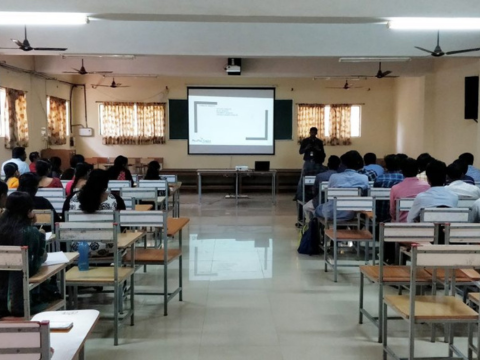In the past few decades, education has undergone a dramatic transformation. Traditional chalk-and-talk methods are steadily being replaced by dynamic digital tools that make learning more interactive, personalized, and accessible. At the heart of this transformation lies Information and Communication Technology (ICT). As digital classrooms become more prevalent, ICT is proving to be a game changer, equipping students with the skills they need for a rapidly evolving world.
Understanding ICT in Education
ICT encompasses a broad range of technologies used to handle communication, including the internet, wireless networks, smartphones, computers, and other digital tools. In the context of education, ICT tools include interactive whiteboards, online learning platforms, multimedia resources, virtual classrooms, educational software, and collaboration tools.
Digital classrooms powered by ICT allow for real-time communication, multimedia content delivery, and flexible access to educational materials. These environments support both teachers and students in creating a richer, more engaging educational experience.
Enhancing Student Engagement and Motivation
One of the most significant impacts of ICT in education is the way it boosts student engagement. Digital tools make learning more interactive through gamified lessons, quizzes, and simulations. For example, platforms like Kahoot!, Quizlet, and Nearpod allow students to participate in real-time, adding a sense of competition and fun.
Multimedia elements such as videos, animations, and virtual reality help students visualize complex concepts that might be difficult to grasp through text alone. These tools cater to various learning styles, allowing visual, auditory, and kinesthetic learners to thrive.
Personalized Learning Experiences
ICT facilitates personalized learning by allowing students to learn at their own pace. Adaptive learning platforms, such as Khan Academy and DreamBox, assess a student’s progress and adjust the difficulty of tasks accordingly. This individualized approach ensures that no student is left behind and that advanced learners are continually challenged.
Teachers can use ICT tools to monitor student progress in real-time and provide immediate feedback. Learning management systems (LMS) like Google Classroom, Moodle, and Edmodo make it easier to track performance, submit assignments, and communicate efficiently.
Accessibility and Inclusivity
ICT has broken down many barriers to education, making it more accessible to students with disabilities or those living in remote areas. Assistive technologies such as screen readers, speech-to-text applications, and customized input devices help students with special needs participate fully in class activities.
For students in rural or under-resourced areas, digital classrooms provide access to quality educational materials and experienced educators through online platforms. This democratization of education helps bridge the gap between urban and rural learners.
Collaboration and Communication
ICT tools foster collaboration among students and between students and teachers. Cloud-based tools such as Google Docs, Microsoft Teams, and Zoom facilitate group projects, discussions, and peer reviews regardless of location.
These tools not only improve academic collaboration but also help students develop essential 21st-century skills like communication, teamwork, and digital literacy. Being proficient in these areas prepares students for future careers in an increasingly digital workplace.
Teacher Empowerment and Professional Development
ICT is not only beneficial for students but also empowers educators. Digital tools help teachers design engaging lesson plans, access teaching resources, and participate in professional development programs. Online courses, webinars, and teacher communities allow educators to continuously improve their skills and share best practices.
Moreover, automated grading systems and administrative software reduce the burden of repetitive tasks, allowing teachers to focus more on instruction and mentorship.
Challenges and Considerations
While the benefits of ICT in education are numerous, there are also challenges to consider. One major concern is the digital divide—not all students have equal access to devices and internet connectivity. Addressing this issue requires investment in infrastructure and policies that promote digital equity.
Another challenge is ensuring that teachers are adequately trained to integrate ICT into their teaching. Without proper training, the technology can become a distraction rather than a learning aid.
Cybersecurity and data privacy are also critical concerns. Schools must ensure that student data is protected and that students are taught how to use technology responsibly.
The Future of ICT in Education
As technology continues to evolve, so will its role in education. Emerging technologies such as artificial intelligence, augmented reality, and blockchain have the potential to further revolutionize digital classrooms.
AI can offer more advanced personalized learning, while AR can bring immersive experiences into the classroom. Blockchain may play a role in secure credentialing and record-keeping.
The future will likely see a blend of in-person and online learning, known as hybrid or blended learning, becoming the norm. This model allows for flexibility and can cater to diverse learning needs.
Conclusion
ICT has undeniably transformed the landscape of education, bringing classrooms into the digital age. Through increased engagement, personalized learning, and improved accessibility, ICT is helping students become more active, independent, and capable learners. It supports a more inclusive educational environment where diverse needs are met and where learners are better equipped for the challenges of tomorrow.
However, to fully harness the benefits of ICT, ongoing investments in infrastructure, teacher training, and equitable access are essential. As technology continues to evolve, so too must our educational practices. With a forward-thinking approach, digital classrooms will continue to nurture smarter students and shape the future of education.

